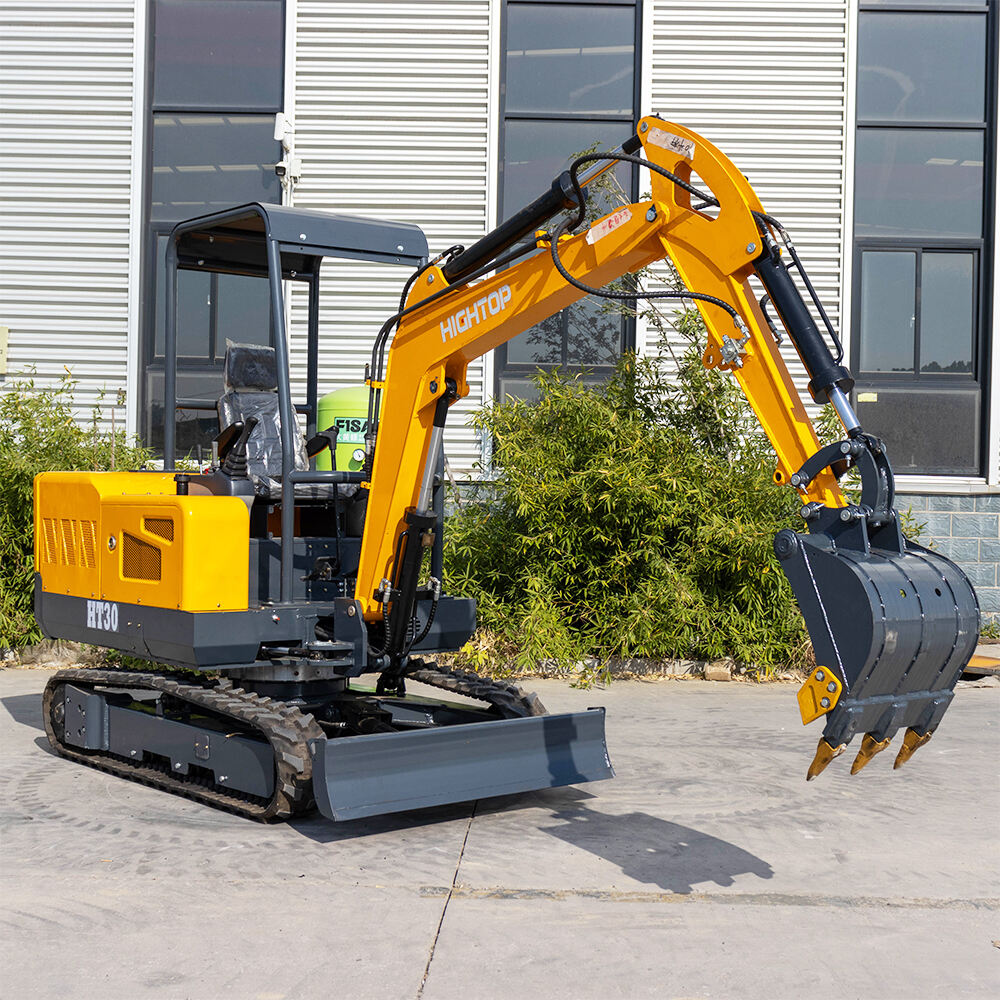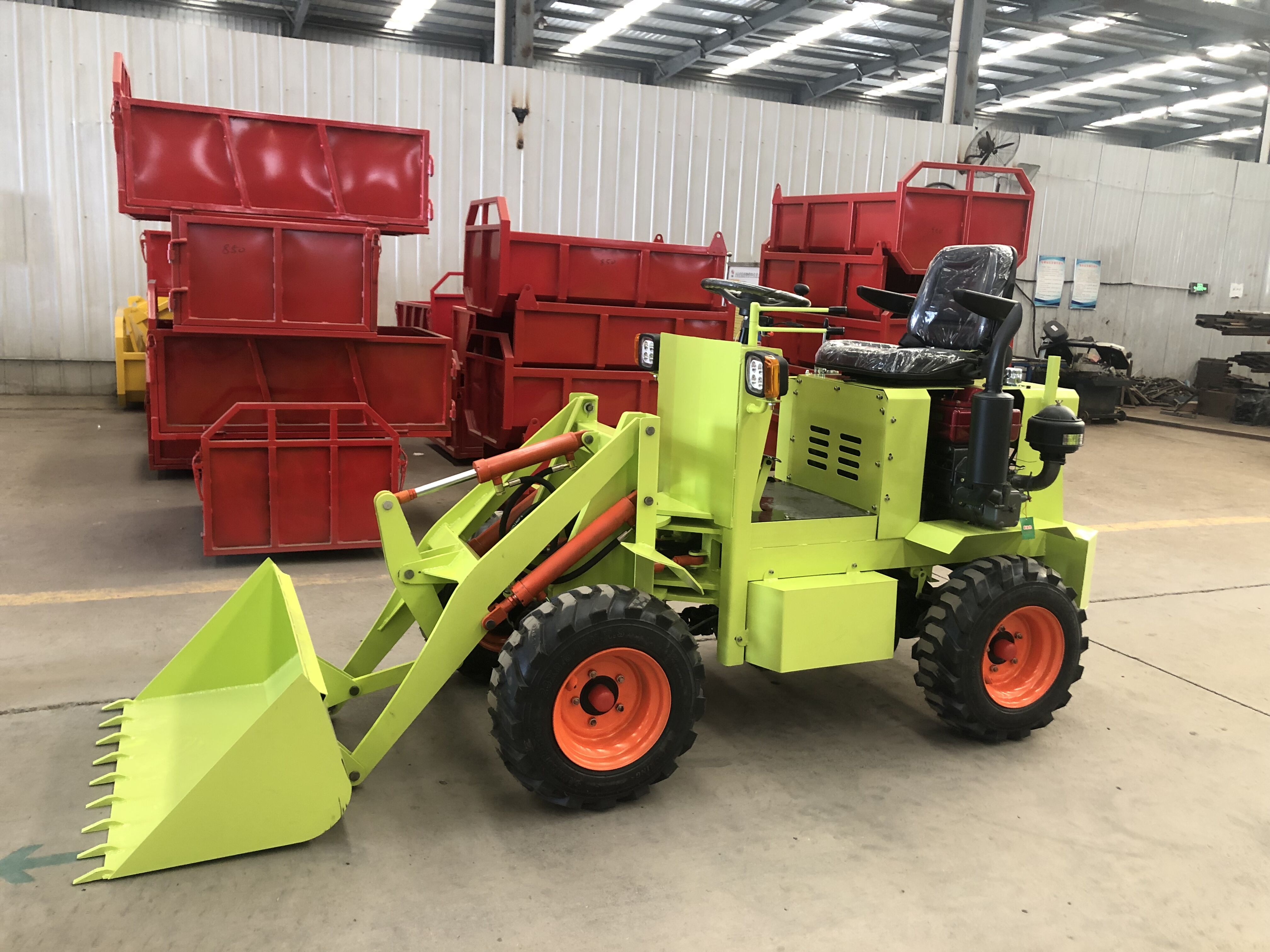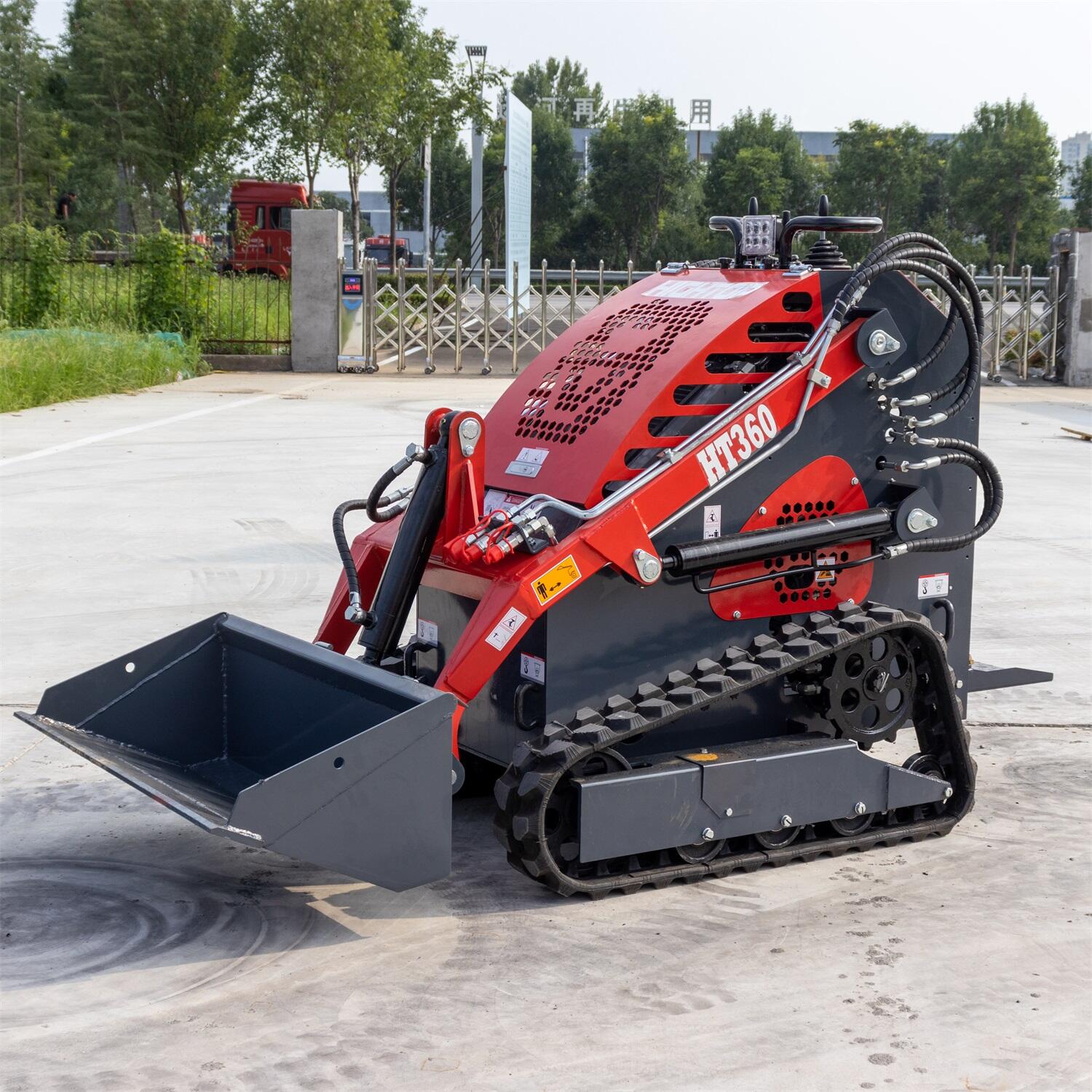Essential Maintenance Tips for Construction Equipment Efficiency
Daily Inspection Routines for Optimal Equipment Performance
Fluid Level Checks and Leak Detection
Regular fluid level checks are crucial for maintaining equipment performance and preventing costly downtimes. Essential fluids such as oil, coolant, and hydraulic fluids must be consistently monitored to ensure they are at optimal levels. Neglecting these checks can result in operation failures, as highlighted by statistics indicating that over 80% of equipment failures stem from fluid-related issues. To combat potential hydraulic failures, it is advisable to incorporate routine leak detection into daily inspection routines. Utilizing tools like dye tests or fluorescent fluids can make leaks more visible and easier to detect during inspections, contributing significantly to proactive maintenance and longevity of the machinery.
Track/Tire Integrity Assessments
Ensuring the integrity of tracks and tires is paramount for the safe and efficient operation of heavy equipment. Daily inspections should focus on identifying any signs of wear, damage, or improper inflation pressures. Additionally, employing visual indicators to monitor tread depth can help in planning timely replacements. Research supports that maintaining correct tire pressure can enhance fuel efficiency by about 10%, underlining the financial and operational benefits of such practices. Scheduling track or tire replacements based on clear wear and tear measurements not only ensures safety but also optimizes the lifespan of the equipment.
Attachment Security Verification
Daily checks of attachment security can prevent many potential accidents on a job site. All equipment attachments should be verified to be securely fastened before commencing operations. Providing operators with adequate training to manually confirm attachment compatibility and operation is crucial. Safety studies show that operator error is a leading cause of equipment accidents, hence the need for vigilant inspection practices. Developing a structured checklist for daily inspections of attachment security can considerably mitigate risks and ensure that all aspects of the equipment are in sync, promoting operational safety and efficiency.
Lubrication and Hydraulic System Maintenance
Proper Greasing Techniques for Moving Parts
Implementing proper greasing techniques for heavy equipment is essential to maximize performance and longevity. Begin by identifying the correct type and amount of grease required for specific moving parts. Utilizing manufacturer guidelines can establish a routine greasing schedule, as evidence suggests that adequate greasing can reduce friction-related wear by up to 35%. Grease guns and other specialized tools can be effectively utilized to reach components that are difficult to lubricate, ensuring comprehensive maintenance for all moving parts.
Hydraulic Hose Pressure Testing
Hydraulic hose testing is a critical practice for maintaining equipment safety and operational efficiency. Regular pressure tests and leak checks should be conducted using pressure test kits and gauge tools, following industry guidelines that recommend testing intervals based on specific equipment usage. Documenting pressure test results is vital for compliance and operational safety reviews, providing a clear record of maintenance actions and any adjustments made to ensure consistent pressure performance.
Filter Replacement Intervals
Regular filter maintenance verifies the efficiency and longevity of hydraulic systems. Set intervals for replacing hydraulic and oil filters according to manufacturer's specifications to maintain system function and avoid wear-related issues. Clean filters are crucial; research indicates that clogged filters can reduce hydraulic efficiency by 20%. During routine inspections, monitor filter conditions to preclude breakdowns, thus maintaining optimal equipment performance.
Cleaning Protocols to Prevent Component Degradation
Debris Removal from Cooling Systems
Implementing routine cleaning of cooling systems is paramount to eliminating debris that can cause overheating and premature equipment failure. Debris accumulation in cooling systems can obstruct airflow, leading to engine inefficiency and potential breakdowns. According to research, clean cooling systems can significantly reduce engine wear and extend the lifespan of machinery. Utilizing pressure washing techniques specifically designed for cooling systems enhances this maintenance effort. Such practices are complemented by a documented cleaning schedule, ensuring compliance with maintenance protocols and promoting equipment hygiene.
Undercarriage Pressure Washing Best Practices
Adopting pressure washing as a standard procedure for undercarriage maintenance is critical for preventing rust and degradation. By regularly cleaning the undercarriage, you protect the integrity of vital components from the build-up of dirt and moisture, which are precursors to corrosion. Best practices in pressure washing include maintaining the correct angle and distance to avoid damaging sensitive parts. Tracking cleaning frequencies and correlating them with maintenance issues can demonstrate reduced breakdowns in vehicles that undergo regular cleaning, thereby validating this proactive approach to component care.
Corrosion Prevention Strategies
Implementing corrosion prevention strategies, such as applying protective coatings and paints on metal surfaces, is essential to minimize corrosion risks in heavy equipment. Regular inspections for signs of corrosion allow for prompt addressing of any issues, as early intervention can reduce repair costs by up to 50%, according to industry studies. Furthermore, educating operators on the importance of keeping equipment dry and properly stored when not in use reinforces these preventative measures. This not only extends the life of the equipment but also maintains its operational efficiency, ensuring reliable performance in demanding environments.
Operator Training for Long-Term Equipment Preservation
Proper Start-Up/Shut-Down Procedures
Adhering to proper start-up and shut-down procedures is crucial to preventing damage to heavy equipment. Training sessions should focus on correcting common errors operators make during these processes, as evidenced by incident reports highlighting significant damage rates due to operator mishaps. To facilitate this, it is essential to integrate comprehensive checklists into training manuals. These checklists act as a guide, reinforcing correct protocols and minimizing the risk of equipment malfunctions that can result from improper handling. By prioritizing operator training in start-up and shut-down procedures, companies can significantly extend the lifespan of their machinery and reduce maintenance costs.
Load Capacity Awareness Training
Understanding load capacity is vital to maintaining the safety and integrity of machinery. Comprehensive training programs are needed to educate operators on recognizing load limits to prevent overloading, which poses significant risks to equipment and operator safety. Utilizing case studies or documented examples where overloading caused accidents can highlight the associated dangers, supported by data analysis on risk management. Visual aids should also be incorporated to enhance operators' understanding of appropriate weight distribution and equipment limitations. Such educational initiatives do not just prevent accidents but also promote the optimal use of equipment, thereby prolonging its service life and reducing repair expenses.
Early Problem Reporting Protocols
Establishing a robust framework for early problem reporting can significantly mitigate potential equipment damage and ensure timely intervention. Developing a user-friendly reporting system encourages operators to promptly communicate any machinery concerns, aligning with studies that demonstrate how proactive maintenance can cut major breakdown costs by up to 60%. It is crucial to train personnel to identify potential issues before they escalate, equipping them with the skills to recognize signs of wear and damage. Cultivating a culture of immediate reporting empowers operators and supports management in swift decision-making, ultimately preserving the equipment's functionality and avoiding costly repairs.
High-Efficiency Construction Equipment Solutions
HT30 3ton Mini Excavator: Swing Boom Technology
The HT30 3ton Mini Excavator utilizes innovative swing boom technology to significantly enhance maneuverability and precision on construction sites. Unlike traditional excavators that require repositioning the entire machine for arm adjustments, the HT30 allows for independent arm movement. This feature aids in improving productivity by reducing operational delays and conserving fuel. According to data comparisons, excavators with swing boom technology, such as the HT30, can boost efficiency by up to 30%, minimizing fuel consumption and lowering emissions. Thus, it stands as an excellent choice for environmentally conscious construction operations, aligning well with sustainable practices.
HTML18 Diesel Mini Loader: Multi-Attachment Versatility
The HTML18 Diesel Mini Loader stands out for its multipurpose capabilities, making it an invaluable asset across diverse construction environments. It supports various attachments like a bucket, forklift, or sweeper, transforming it into a versatile machine for multiple tasks, including shoveling, lifting, and cleaning. Customer testimonials frequently highlight the HTML18's efficiency, noting how versatile equipment can lead to significant cost savings and a higher return on investment (ROI). For example, statistics show that incorporating multi-functional machinery like the HTML18 can cut operational expenses by up to 15%, proving it to be a cost-effective and adaptable solution for dynamic project demands.
HTS360L Skid Steer Loader: Ergonomic Maintenance Design
The HTS360L Skid Steer Loader boasts ergonomic design features that prioritize operator comfort and efficiency. Its user-friendly controls and clear instrument panel reduce fatigue and enhance performance during prolonged operations. Studies have shown that ergonomic equipment designs, like those in the HTS360L, lead to a 20% improvement in operator productivity and reduce the likelihood of work-related injuries. Additionally, its maintenance-friendly design allows for easy access to all major components, simplifying routine checks and repairs. Such designs significantly cut down on maintenance time and costs, ensuring the HTS360L remains a reliable choice in the realm of construction equipment solutions.
Preventive Maintenance Record-Keeping Strategies
Digital Log Implementation Benefits
Transitioning to digital maintenance logs offers a multitude of efficiency and accuracy benefits for managing heavy equipment. Digital record-keeping allows for streamlined data entry and retrieval, significantly reducing administrative time by up to 30%, as reported in recent industry studies. This efficiency improvement enables staff to allocate more time to critical tasks rather than cumbersome paperwork. Furthermore, integrating digital logs with existing inventory systems enhances resource management by providing real-time insights into equipment parts and supplies. This seamless integration aids in anticipating future needs and reducing downtime which is vital for businesses managing equipment like mini excavators for sale or skid steer loaders for sale.
Warranty Compliance Documentation
Maintaining comprehensive documentation for warranty compliance is crucial in safeguarding your investments in heavy equipment. Without proper records, businesses risk losing warranty benefits; there have been cases where lack of documentation led to unsuccessful warranty claims. Ensuring adherence to maintenance schedules is key, and employing electronic documentation strategies can streamline this process. Best practices include storing digital maintenance logs and creating alerts for upcoming service dates to stay compliant. Protecting equipment investments through meticulous documentation is essential, with strategies applicable to diverse machinery such as mini skid steer attachments and electric forklifts for sale.
Resale Value Optimization Through Service History
A detailed service history is a powerful tool in enhancing the resale value of equipment. Research indicates that machines with well-documented maintenance records can achieve resale prices that are 20% to 30% higher than those lacking such records. Detailed documentation demonstrates responsible ownership and assures potential buyers of the equipment's condition. Compiling service histories involves digital storage solutions that verify each service instance, which can be presented with sales negotiations. For sellers with equipment like skid loaders for sale, these strategies can significantly optimize financial returns upon resale.




